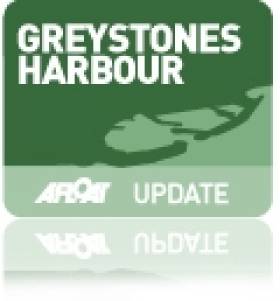Displaying items by tag: Basil Miller
Greystones Harbour Group Urges 'Take Down The Hoardings'
A new residents group to push for progress on Greystones harbour has been formed. The 'Give Us Back Our Harbour' group says it has made substantial progress towards its objectives after it stepped up a campaign two weeks ago.
The GUBOH group has held several meetings with town and county councillors from all parties and has published the proposals it put to them to allow almost a kilometre of hoardings at the harbour development to come down and have the amenity returned to the public for the summer season.
"There has been great progress," said GUBOH spokesman Basil Miller. "We've met the Fianna Fail town councillors, including Greystones mayor Ciarán Hayden, Fine Gael's town and county councillors, and the Labour group which includes the Cathaoirleach of Wicklow County Council, Tom Fortune.
"All are agreed that something must be done to get the harbour amenity back to the people. All are agreed that it must be done soon. All are agreed that delegates from GUBOH must be included in any discussions with the developers on steps to make the harbour site safe, landscape it, and return the amenity to the people of Greystones."
Miller went on to say that there are disagreements on timing and on specific steps, but the overall level of agreement was "most encouraging".
"We are now quite optimistic, where ten days back we would have been 'cautiously optimistic'," he said. "Our proposals have, in their broad outline, been accepted by all parties. Issues have been raised, such as safety and insurance, which we acknowledge are important.
"But we believe that this kind of issue can be dealt with in meetings with the developers and WCC which will include GUBOH delegates, and we have told councillors this. Not every issue or objection need be resolved ahead of such discussions — we would expect suggestions for solutions to come from any party at the table, including Sispar or WCC."
He said that GUBOH has a pool of expertise both among its committee members and general membership which can help in such discussions.
"We can also call on external expert help. Several persons eminent in fields ranging from contract law to engineering to insurance and more have called us to volunteer their services. We can actually augment the expertise already available to WCC and Sispar with contributions from our own people, and we are happy to do so pro bono."
The local councillors have agreed that a GUBOH delegation should join in meetings with Sispar and WCC on the issues involved.
GUBOH has also begun a round of discussions with four local clubs in relation to the community facilities at the harbour which have also been delayed. The rowing club, angling club, sailing club and Sea Scouts will all move into new clubhouses and compounds at the south-‐east corner of the harbour, but nobody is able to say when these will be built or what the sequence for construction will
be.
And in the run-‐up to the Greystones Town Council meeting on Tuesday 31 May, at which Sispar will make a presentation on the harbour, GUBOH will also meet local TDs to seek their further support.
"It's not over till the fat lady sings, but we hope to see a united front of the community, the local councillors and the local TDs putting the point strongly that it is not acceptable for a ghost harbour and an empty building site to be left as it now is in the absence of any further building work," said Miller.
"To that end, we are ramping up our campaign another notch. Collectors will be on the streets in the area this weekend asking even more people to sign our petition. More premises will be displaying our banner.
"And more of our members and supporters will be attending the Town Council meeting, not in the form of a demonstration or protest, but simply to show Sispar and WCC that they stand behind us and behind our local representatives when they seek action to get the harbour back into public use."
Ten days ago, the group placed large banners on the walls of several business premises in Greystones as part of its campaign to have the harbour hoardings removed in time for the summer.
The banners bear the slogan "Give Us Back Our Harbour — Take Down the Hoardings".





























































